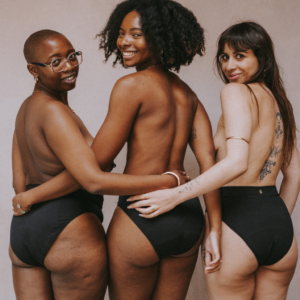How many clothes were you gifted this year? How many times are you likely to wear any of them before throwing them out?
Did you know that on average there is one garbage truck of clothes burnt or sent to landfills every second? The average consumer has bought 60 per cent more clothes in 2014 than in 2000, but kept each garment for half as long according to the World Resource Institute.
Fast fashion is having a major impact on the environment and until we learn how to re-use, recycle and invest in more eco-friendly brands, it will only get worst. Today we find that trends are forever shaping our purchasing methods. With an increase of apparel brands and a higher demand for new clothes, consumers want and can afford to buy new clothes consistently. You will find that many fashion brands today (especially fashion brands online) are able to provide clothes at an affordable price for consumers within a short time-frame.

Although being able to afford certain clothes more often may seem great, it has a major impact on our environment. Fast fashion brands can cause a ton of serious environmental problems which include:
– Landfill waste: not only are consumers contributing mass waste to our own landfills but also in developing countries. Whilst 80 per cent of the clothes discarded by the consumers in major cities can be re-used, these all typically end up in landfills. In the US alone, clothing landfills take up more than 125 million cubic yards each year
– Unfair Labour: buying into a fashion brand that sells affordable and on-trend clothes may seem all fun and games until you think about the production process for them. Who made those clothes? This topic itself is growing as more people become curious about the production process of their clothes. However, large fast-fashion corporations and retailers still engage with unfair labour practises so that they can keep their production costs as low as possible.
– Carbon Dioxide: The increased use of synthetic fibres has a major impact on our environment. These synthetics can emit up to three times the amount of carbon dioxide than other fibres such as cotton. They can also take up to 100 years to degrade. Over 50 per cent of clothes are made from this material, and a lot of it is thanks to fast fashion brands who use synthetic fibres such as Polyester. Choosing a sustainable fashion brand or investing in one (if you’re looking to start-up a fashion business), is a wiser choice and you are more likely to be able to sell higher quality products at a higher price margin. Find out more in our article; ‘Why Choosing Sustainable Fabrics Will Have a Positive Impact.’
– Child Labour : Child labour is also existent in the production process for fast fashion brands. Workers under the age of 18 take up 60 per cent of those who labour in the global fashion industry. In addition to this, the work environment in these developing countries are hazardous and many workers are prone to death.

Some additional facts also include:
– To make 1 cotton T-shirt it takes up 2,700 litres of water
– Approximately 2 billion pairs of jeans are produced each year and a pair takes up to 7,000 litres of water to produce
– Fashion clothing made of non-biodegradable fabrics can sit in landfills for up to 200 years

All that seems to have quite a lot of impact for the production of fashion clothes that won’t even be worn long-term or re-worn! Clothing production has approximately doubled in the last fifteen years and there is an expected 400 per cent increase in world GDP by 2050 will mean a greater demand for clothing- (the Ellen McArthur Foundation).
Since there is an on-going and increasing demand for fashion clothing, this can actually leave room for opportunity. Creating an eco-friendly fashion brand is just one of many things an aspiring fashion designer can consider as this will contribute massively to saving our environment. As more people are becoming aware of the impact of fast fashion, they are more likely to invest in sustainable fashion brands.



